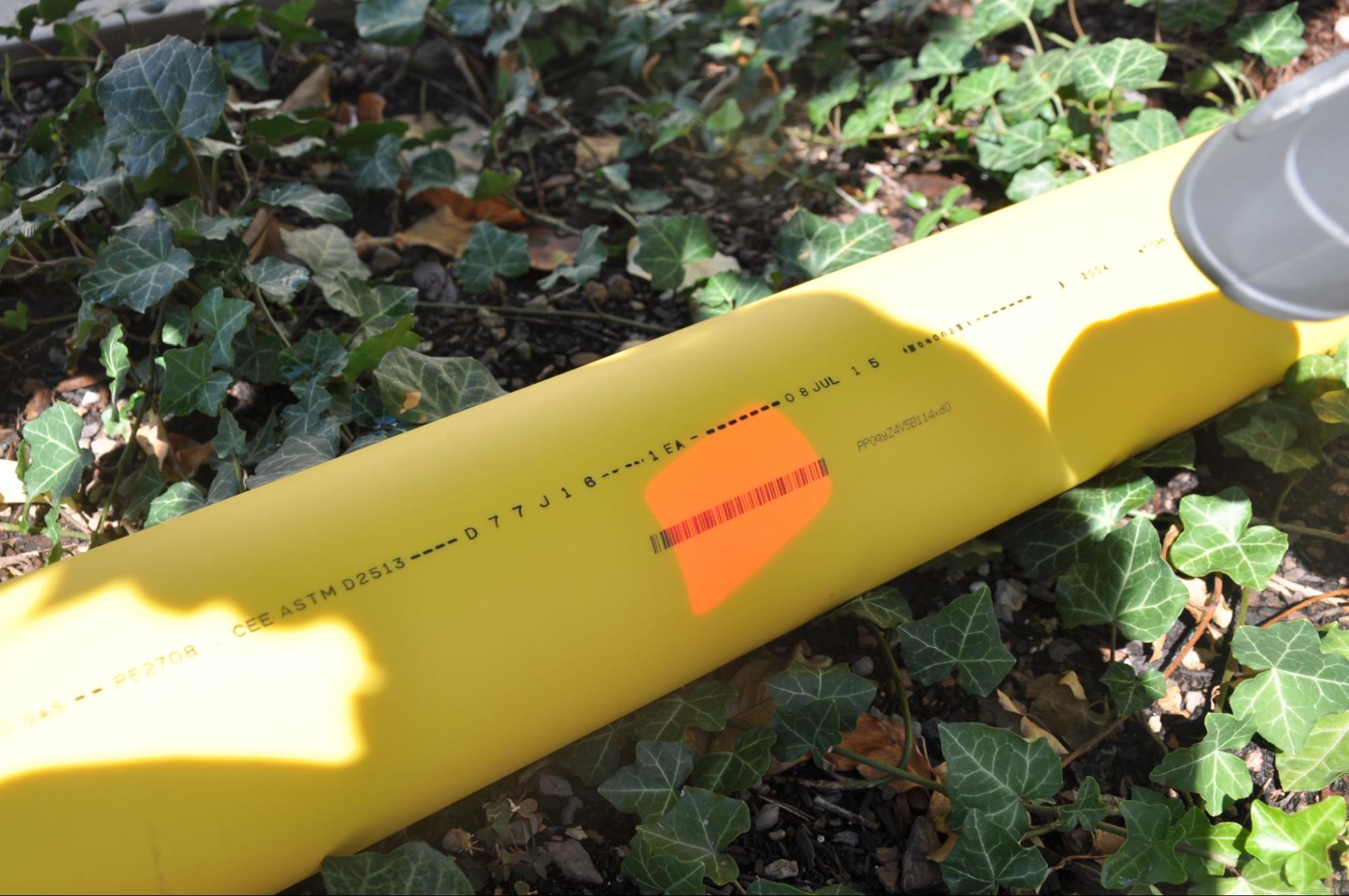The natural gas industry proactively developed ASTM F2897 to address the rare but persistent risk of manufacturer recalls. This standard provides a specification for an open, decentralized encoding system that generates a 16-digit alphanumeric code that embeds essential traceability data for plastic pipe and fittings.
In 2018 PHMSA published the much anticipated Plastic Pipe Rule but delayed the expected requirement for operators to implement tracking and traceability recordkeeping. However, the regulation does require that plastic pipe be marked with the ASTM F2897-11a marking. Further, the regulation states that “PHMSA expects all distribution operators to already be collecting some form of tracking and traceability information, since the Distribution Integrity Management Program (DIMP) regulations in §192.1007(a)(5) require that operators capture and retain data on the location where new pipeline is installed and the material of which it is constructed.”
DIMP requires operators to “Provide for the capture and retention of data on any new pipeline installed. The data must include, at a minimum, the location where the new pipeline is installed and the material of which it is constructed.”
So while the PHMSA regulations do not explicitly and prescriptively require that operators capture the full traceability data in ASTM F2897, much of the industry has decided that this is a best practice with a strong return-on-investment.
Nearly all manufacturers of plastic pipe and fittings in the US now mark their products with a barcode that encodes the 16-digit code.


Many operators have implemented programs and enabling technologies to scan these barcodes during construction to create material traceability records. Combined with high accuracy GPS, this data enables operators to know exactly where their assets are.


There have been multiple manufacturer recalls in the last several years, and operators that maintain asset traceability data in their GIS and/or ERP have been able to quickly and efficiently assess their exposure and put plans in place to mitigate the risk of premature failure. The natural gas industry is safer and more efficient because of material tracking and traceability standards and technology.




.png)